Related Research Articles
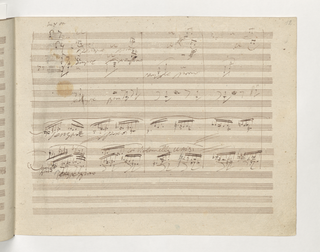
The Symphony No. 9 in D minor, Op. 125, is a choral symphony, the final complete symphony by Ludwig van Beethoven, composed between 1822 and 1824. It was first performed in Vienna on 7 May 1824. The symphony is regarded by many critics and musicologists as Beethoven's greatest work and one of the supreme achievements in the history of music. One of the best-known works in common practice music, it stands as one of the most performed symphonies in the world.

Karl Amadeus Hartmann was a German composer. Sometimes described as the greatest German symphonist of the 20th century, he is now largely overlooked, particularly in English-speaking countries.
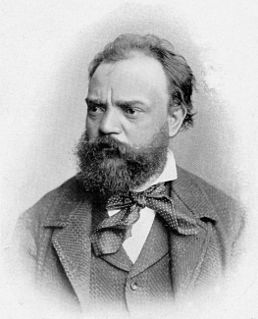
Antonín Leopold Dvořák was a Czech composer, one of the first to achieve worldwide recognition. Following the Romantic-era nationalist example of his predecessor Bedřich Smetana, Dvořák frequently employed rhythms and other aspects of the folk music of Moravia and his native Bohemia. Dvořák's own style has been described as "the fullest recreation of a national idiom with that of the symphonic tradition, absorbing folk influences and finding effective ways of using them".

The War Requiem, Op. 66, is a large-scale setting of the Requiem composed by Benjamin Britten mostly in 1961 and completed in January 1962. The War Requiem was performed for the consecration of the new Coventry Cathedral, which was built after the original fourteenth-century structure was destroyed in a World War II bombing raid. The traditional Latin texts are interspersed, in telling juxtaposition, with extra-liturgical poems by Wilfred Owen, written during World War I.
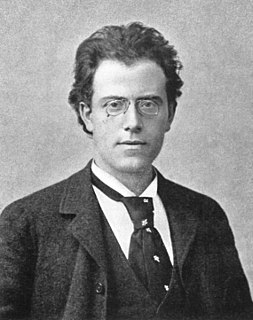
Symphony No. 1 in D major by Gustav Mahler was mainly composed between late 1887 and March 1888, though it incorporates music Mahler had composed for previous works. It was composed while Mahler was second conductor at the Leipzig Opera, Germany. Although in his letters Mahler almost always referred to the work as a symphony, the first two performances described it as a symphonic poem and as a tone poem in symphonic form respectively. The work was premièred at the Vigadó Concert Hall, Budapest, in 1889, but was not well received. Mahler made some major revisions for the second performance, given at Hamburg in October 1893; further alterations were made in the years prior to the first publication, in late 1898. Some modern performances and recordings give the work the title Titan, despite the fact that Mahler only used this label for the second and third performances, and never after the work had reached its definitive four-movement form in 1896.

Dmitri Shostakovich’s Symphony No. 7 in C major, Op. 60, nicknamed the Leningrad, was begun in Leningrad, completed in the city of Samara in December 1941, and premiered in that city on March 5, 1942. At first dedicated to Lenin, it was eventually submitted in honor of the besieged city of Leningrad, where it was first played under dire circumstances on August 9, 1942, during the siege by German and Finnish forces. The Leningrad soon became popular in both the Soviet Union and the West as a symbol of resistance to fascism and totalitarianism, thanks in part to the composer's microfilming of the score in Samara and its clandestine delivery, via Tehran and Cairo, to New York, where Arturo Toscanini led a broadcast performance and Time magazine placed Shostakovich on its cover. That popularity faded somewhat after 1945, but the work is still regarded as a major musical testament to the 27 million Soviet people who lost their lives in World War II, and it is often played at Leningrad Cemetery, where half a million victims of the 900-day Siege of Leningrad are buried.

A German Requiem, to Words of the Holy Scriptures, Op. 45 by Johannes Brahms, is a large-scale work for chorus, orchestra, a soprano and a baritone soloist, composed between 1865 and 1868. It comprises seven movements, which together last 65 to 80 minutes, making this work Brahms's longest composition. A German Requiem is sacred but non-liturgical, and unlike a long tradition of the Latin Requiem, A German Requiem, as its title states, is a Requiem in the German language.
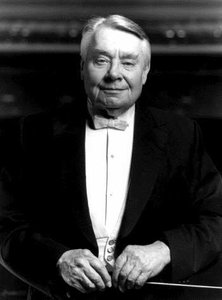
Robert Lawson Shaw was an American conductor most famous for his work with his namesake Chorale, with the Cleveland Orchestra and Chorus, and the Atlanta Symphony Orchestra and Chorus. He was known for drawing public attention to choral music through his wide-ranging influence and mentoring of younger conductors, the high standard of his recordings, his support for racial integration in his choruses, and his support for modern music, winning many awards throughout his career.
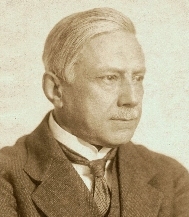
Emil Nikolaus Joseph, Freiherr von Reznicek was an Austrian composer of Romanian-Czech ancestry.
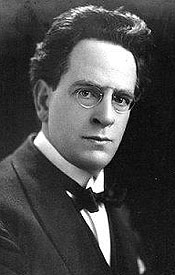
John Herbert Foulds was an English composer of classical music. He was largely self-taught as a composer, and belongs to the figures of the English Musical Renaissance.
Lera Auerbach is a Soviet-born American classical composer and concert pianist.
Sinfonia da Requiem, Op. 20, for orchestra is a symphony written by Benjamin Britten in 1940 at the age of 26. It was one of several works commissioned from different composers by the Japanese government to mark Emperor Jimmu's 2600th anniversary of the founding of the Japanese Empire. The Japanese government rejected the Sinfonia for its use of Latin titles from the Catholic Requiem for its three movements and for its somber overall character, but it was received positively at its world premiere in New York on 29 March 1941 under John Barbirolli. A performance in Boston under Serge Koussevitzky led to the commission of the opera Peter Grimes from the Koussevitzky Music Foundations.

Ingo Metzmacher is a German conductor and artistic director of the festival KunstFestSpiele Herrenhausen in Hanover.

Richard Wetz was a German late Romantic composer best known for his three symphonies. In these works, he "seems to have aimed to be an immediate continuation of Bruckner, as a result of which he actually ended up on the margin of music history".

The Vienna Singverein is the concert choir of the Vienna Musikverein with around 230 members. It is regularly requested by top orchestras and conductors for large and varied projects.
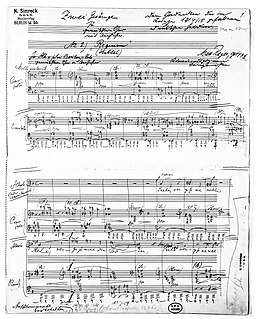
Max Reger's 1915 Requiem, Op. 144b, is a late Romantic setting of Friedrich Hebbel's poem "Requiem" for alto or baritone solo, chorus and orchestra. It is Reger's last completed work for chorus and orchestra, dedicated in the autograph as Dem Andenken der im Kriege 1914/15 gefallenen deutschen Helden.
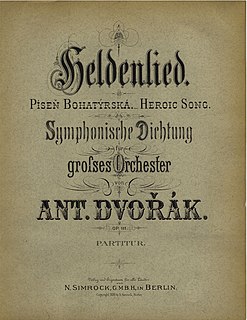
A Hero's Song, Op. 111, B. 199, also called Heroic Song for Orchestra, is a symphonic poem for orchestra composed by Antonín Dvořák between August 4 and October 25, 1897. It was premiered in Vienna in on December 4, 1898, with Gustav Mahler conducting the Vienna Philharmonic, and was later published in Berlin in 1899. Unlike Dvořák's other symphonic poems, this work is not based upon a specific text, and it may have been intended to be autobiographical. The piece is mostly energetic and triumphant, but it includes a slower section containing a funeral march. A typical performance lasts approximately 22 minutes.
Secular Cantata No. 2: A Free Song is a cantata for chorus and orchestra by William Schuman, using text by Walt Whitman, that was awarded the first Pulitzer Prize for Music in 1943, after it was premiered by the Boston Symphony Orchestra under Serge Koussevitzky. Music Sales Classical describes it as containing, "granite-like blocks of dissonant harmony and sharp-edged counterpoint."
Dooryard Bloom is a composition for solo baritone and orchestra by the American composer Jennifer Higdon. The work was commissioned by the Brooklyn Philharmonic in 2004 and was premiered on April 16, 2005 by the baritone Nmon Ford and the Brooklyn Philharmonic under the conductor Michael Christie. The piece is adapted from the poem "When Lilacs Last in the Dooryard Bloom'd" by the American author Walt Whitman.

The Symphony No. 2 in E minor, is one of the Armenian composer Aram Khachaturian's most well-known pieces of music. Completed in 1944, it was nicknamed The Bell or Symphony with Bells by Georgi Khubov for its bell motif that begins and ends the piece. A typical performance lasts about 50 minutes.
References
- ↑ Jaschinski, Andreas (1999) Liner notes for Hartmann Complete Symphonies, EMI 5 56911 2
- ↑ Rickards, Guy (1995) Hindemith, Hartmann and Henze, Phaidon
- ↑ "1. Symphonie". Schott Music.